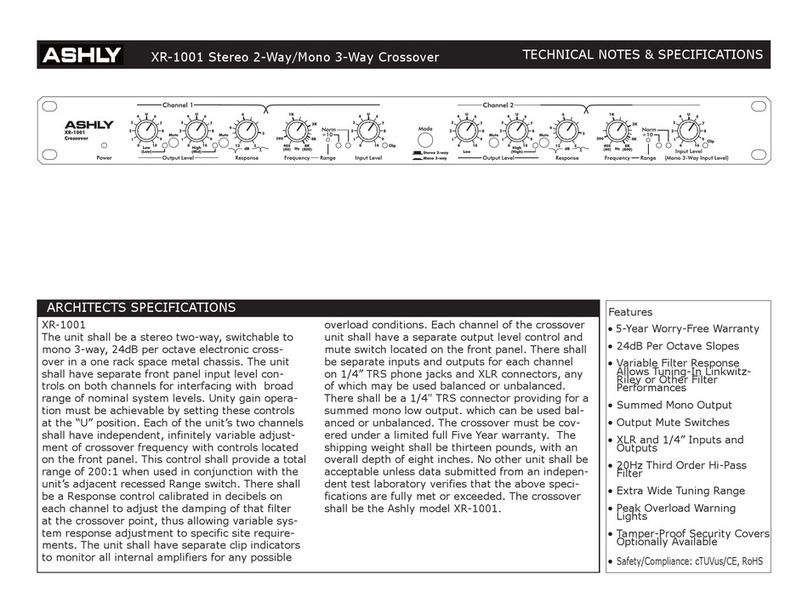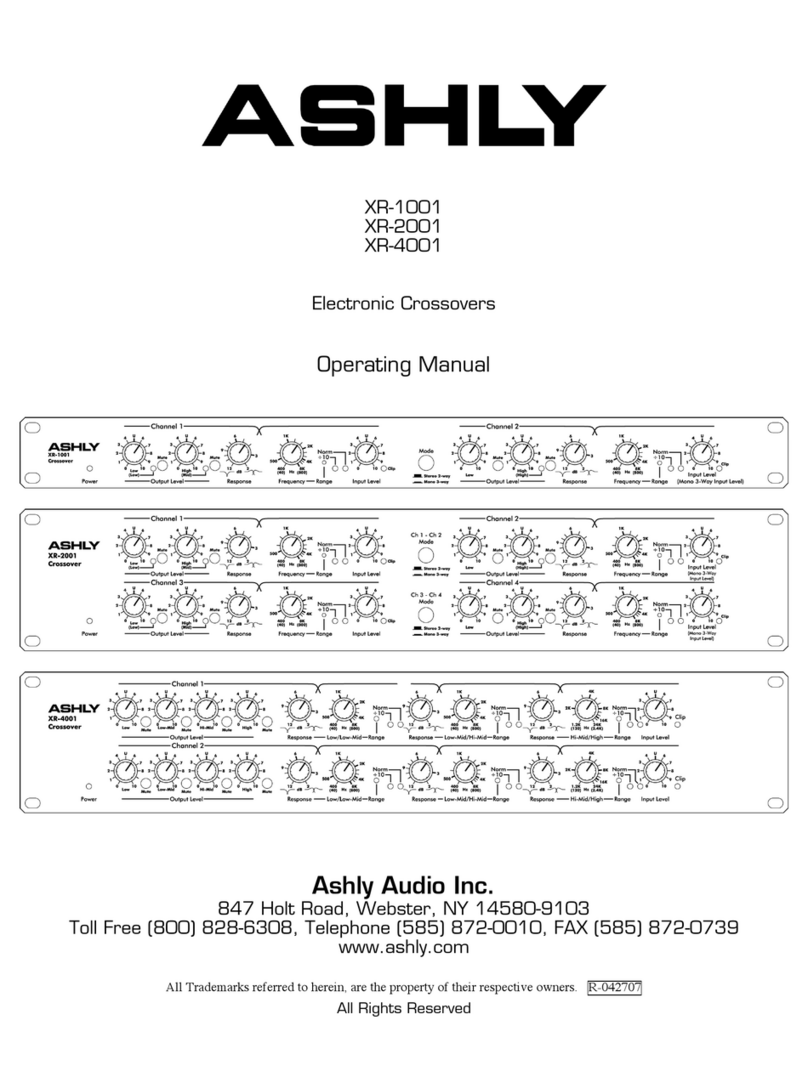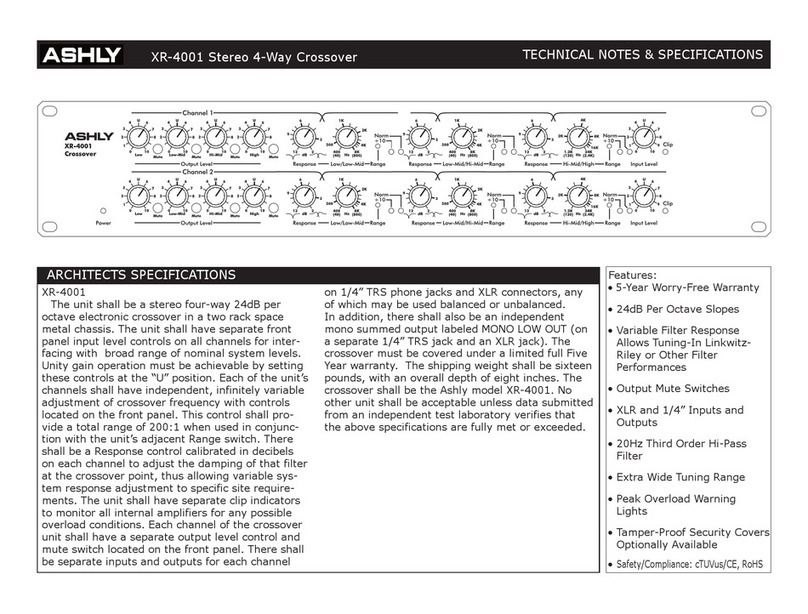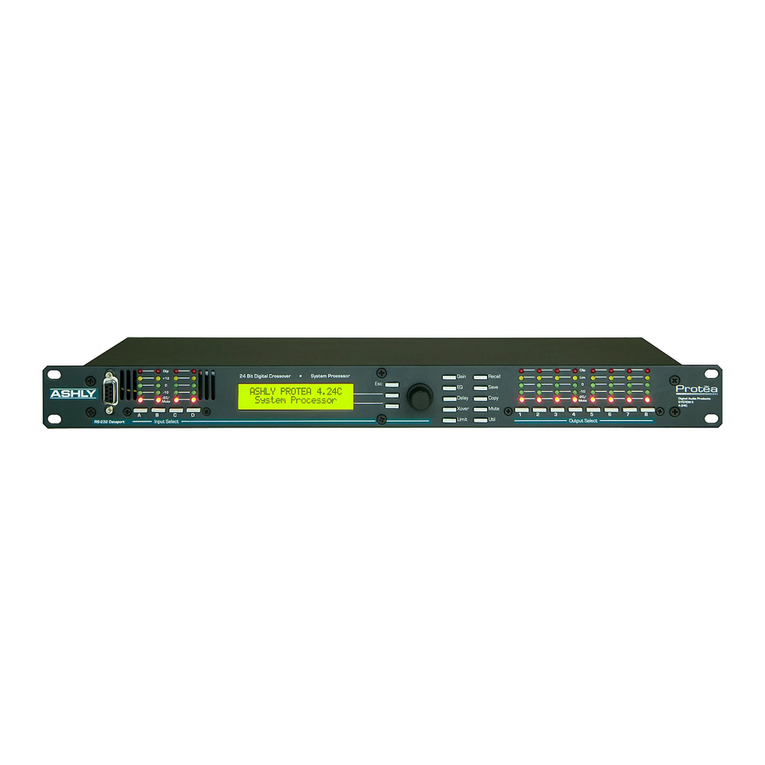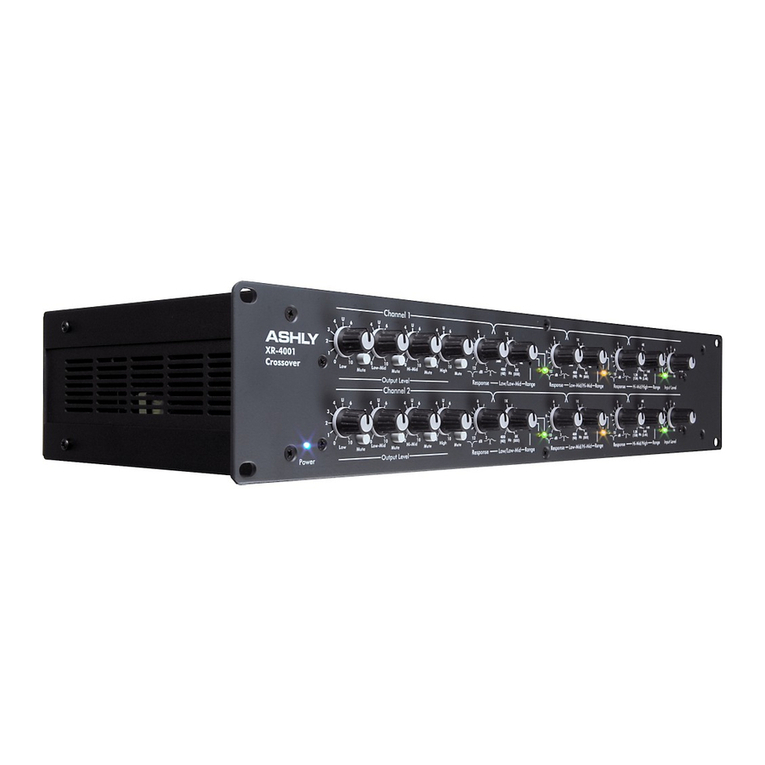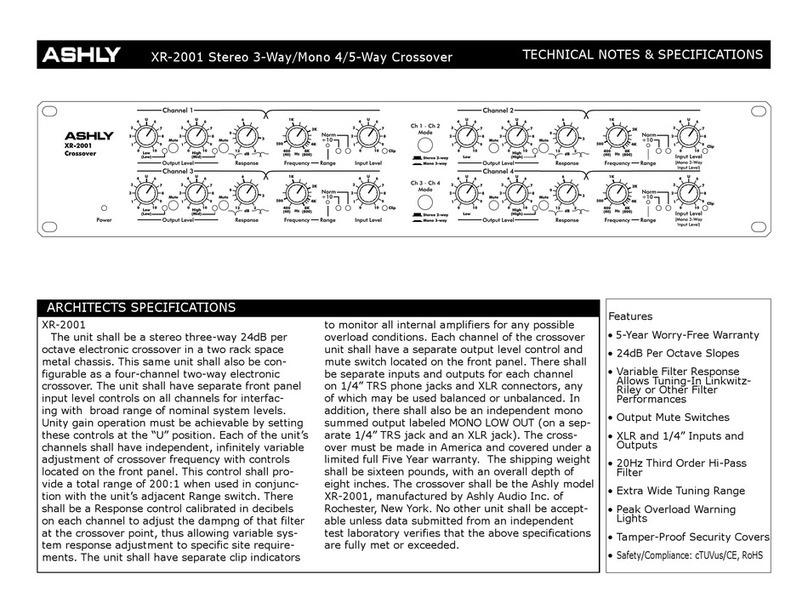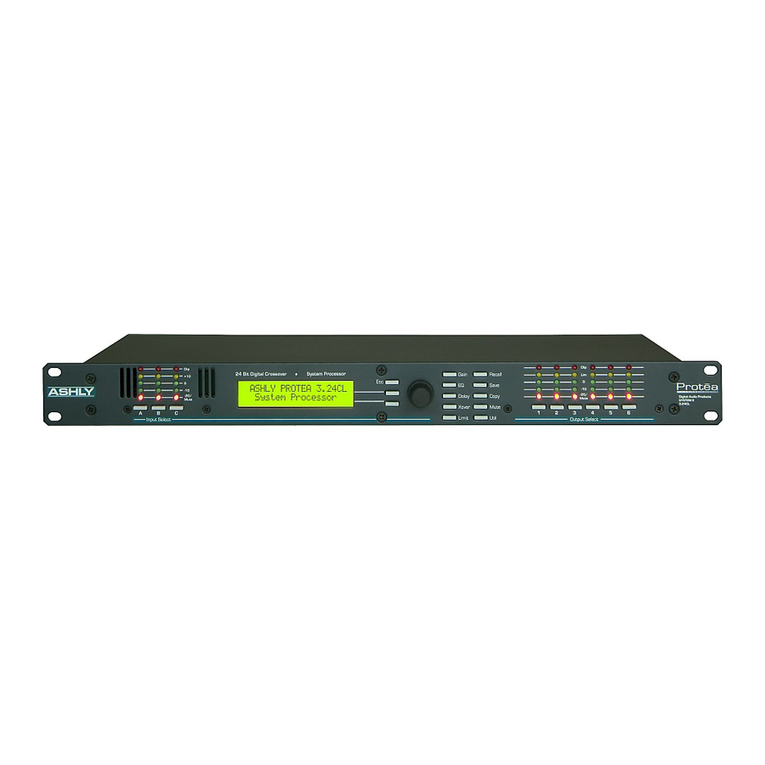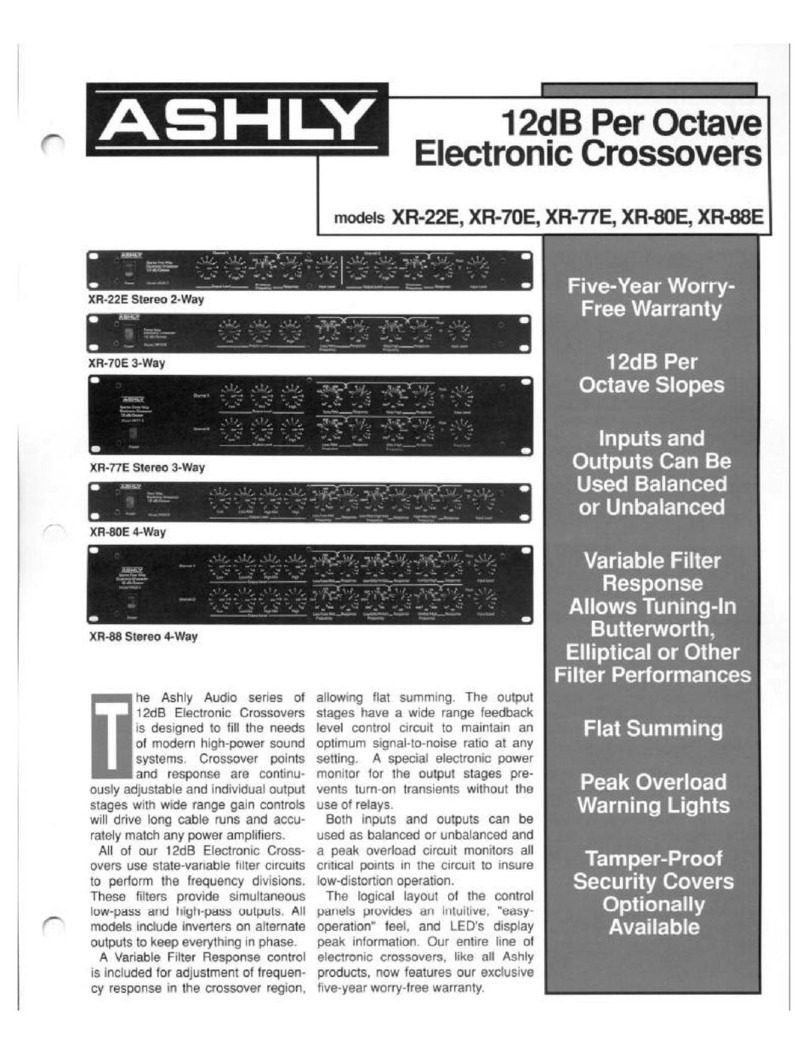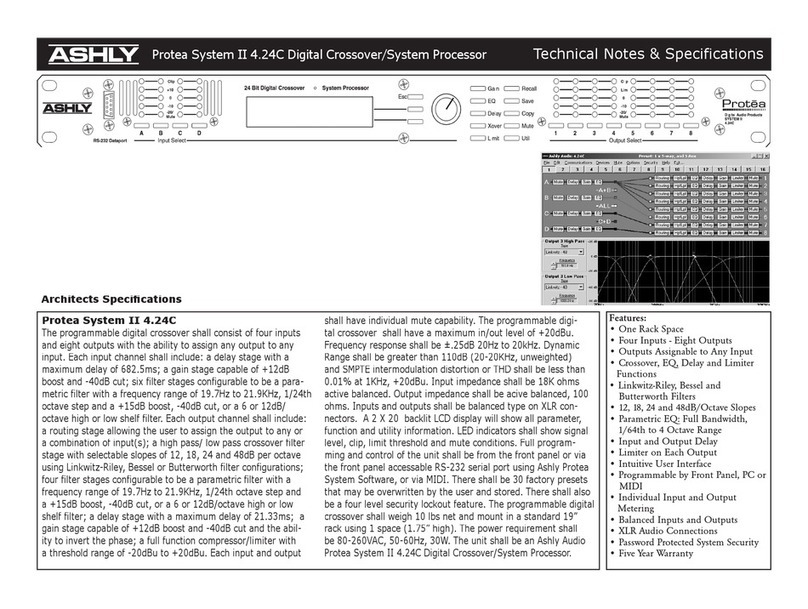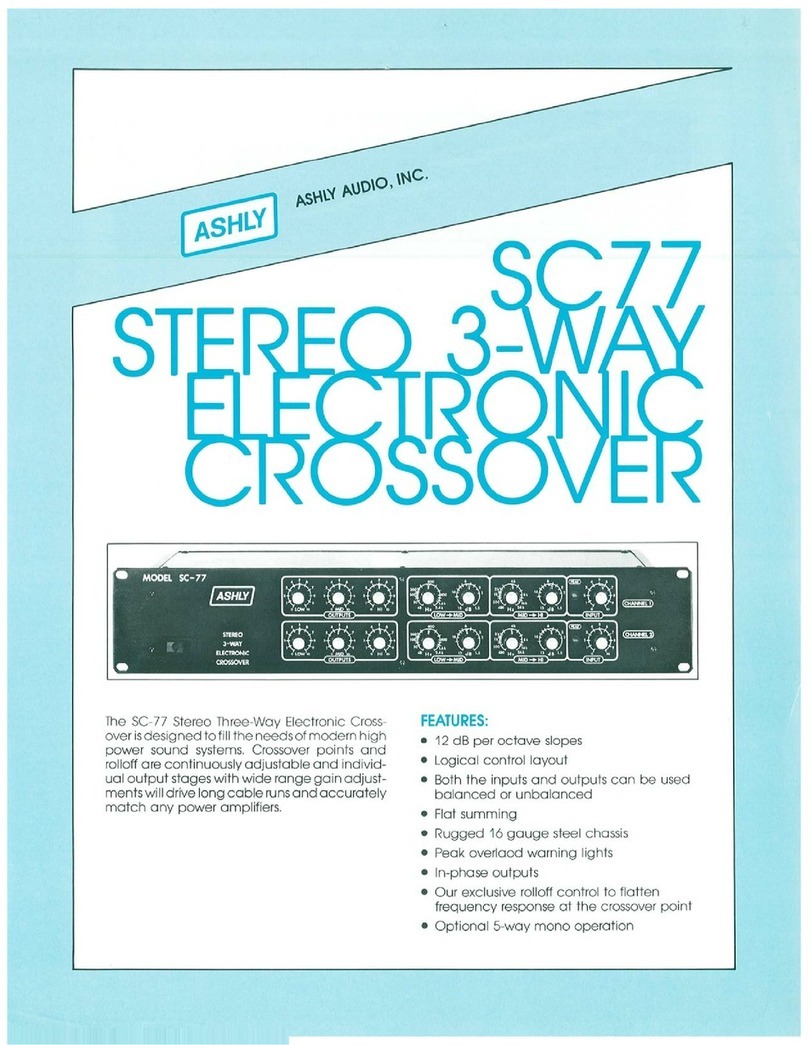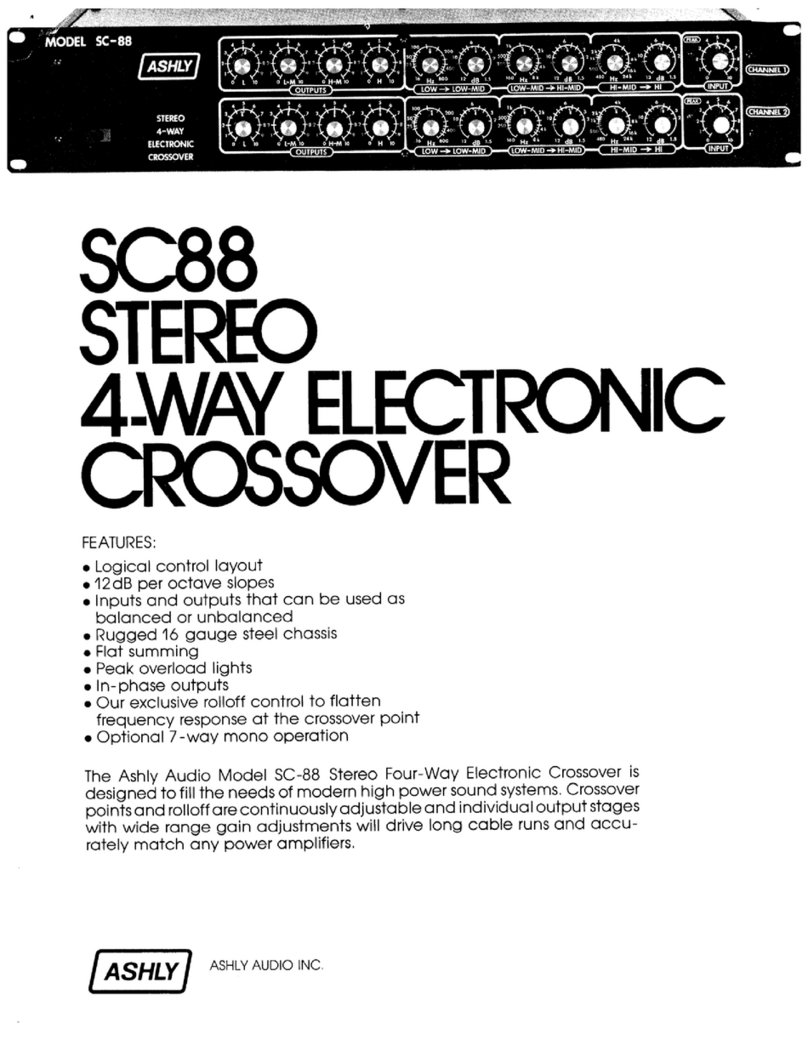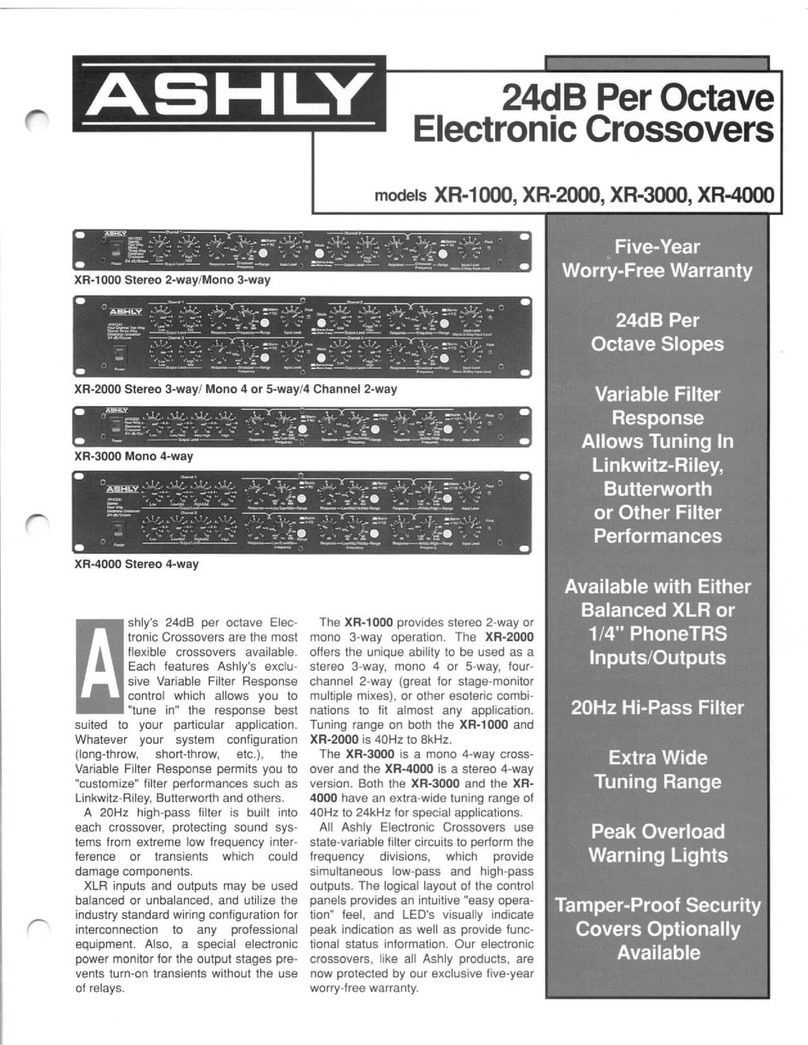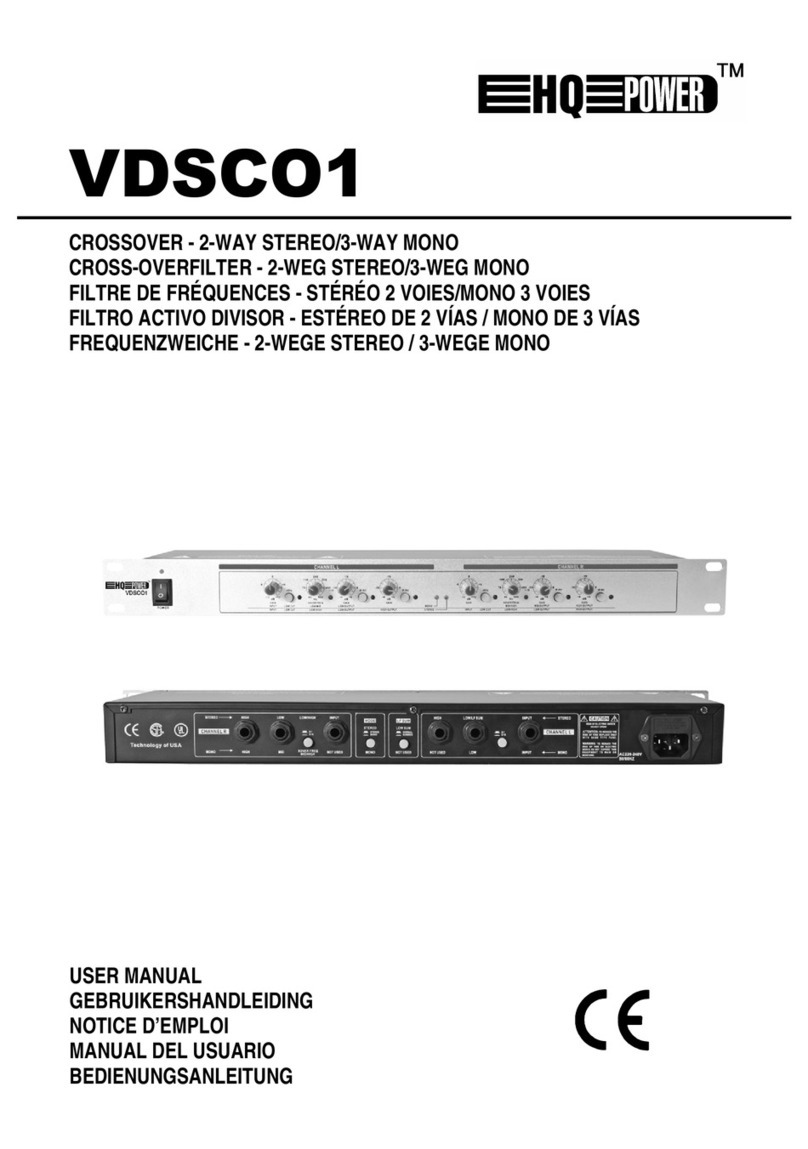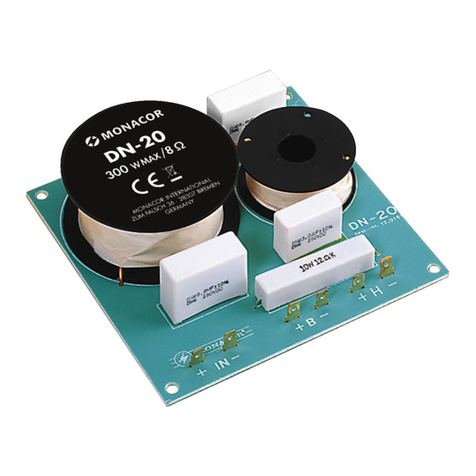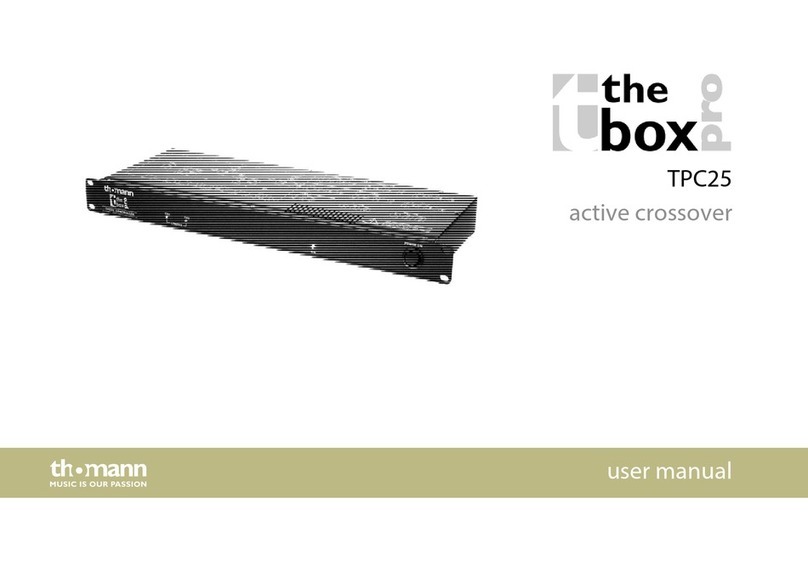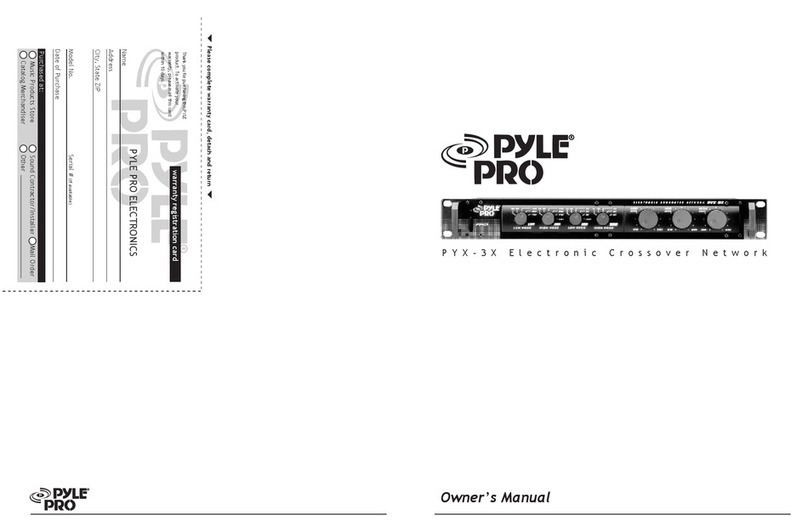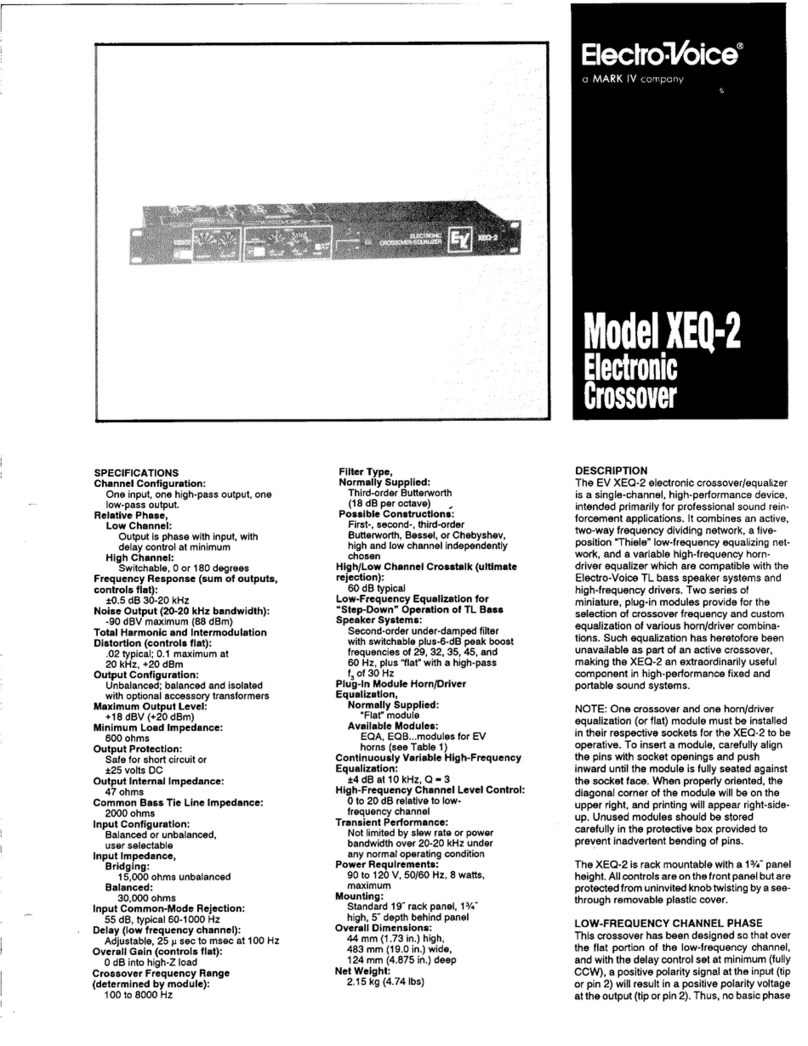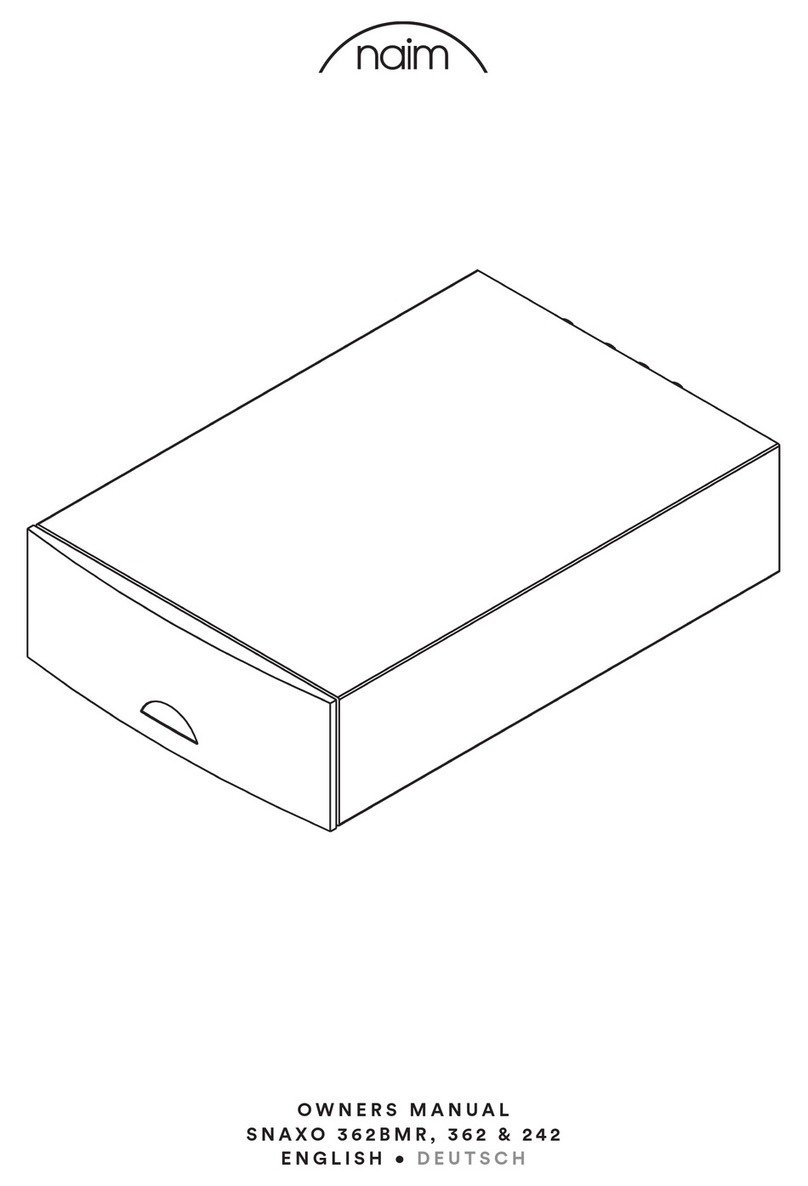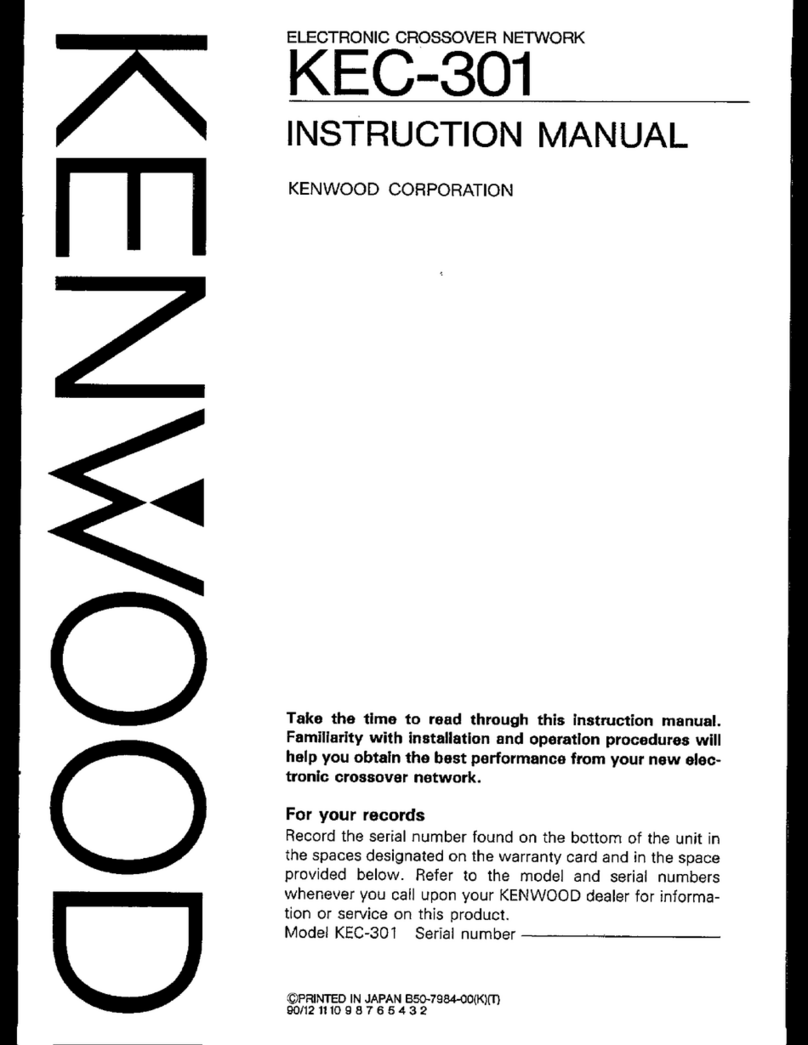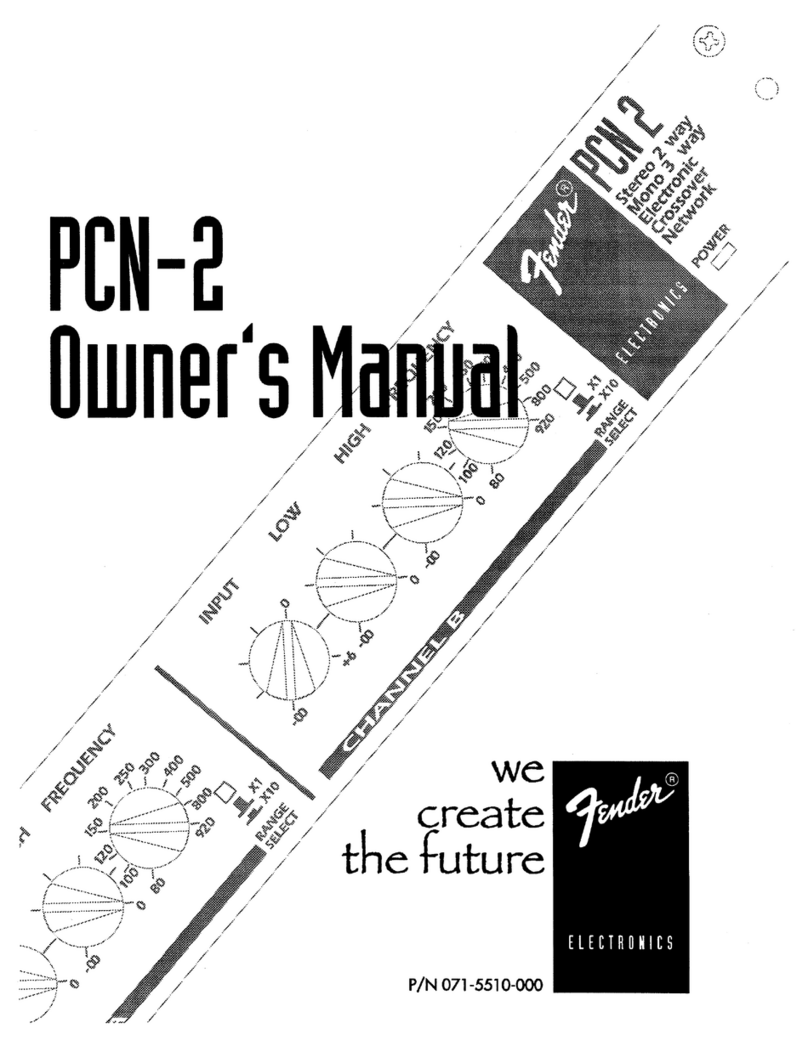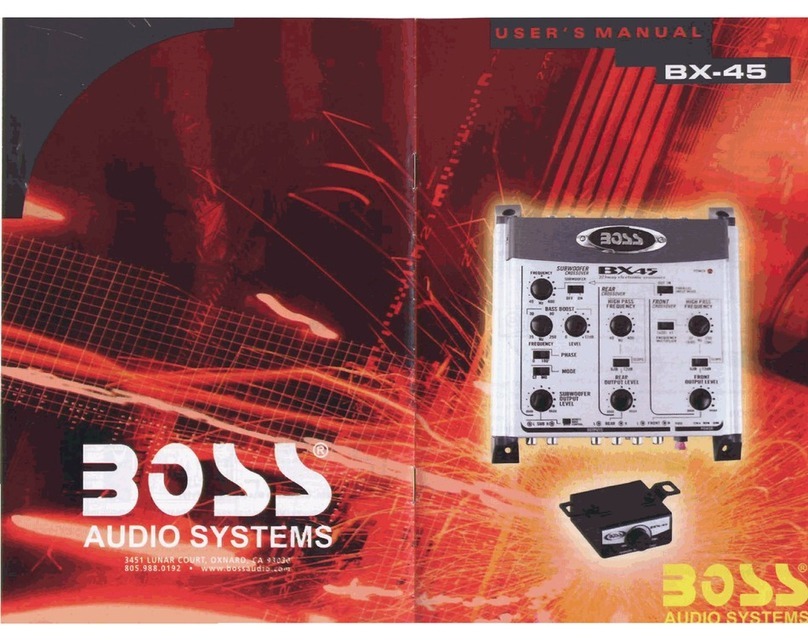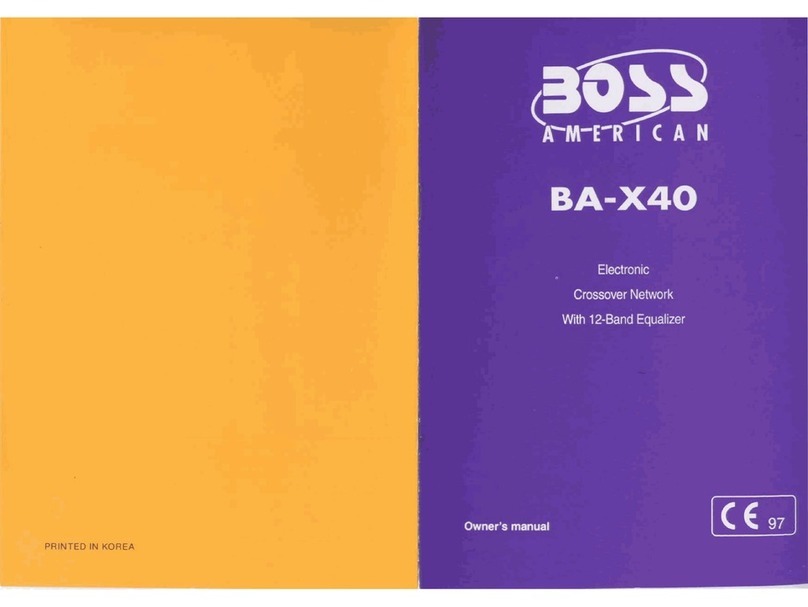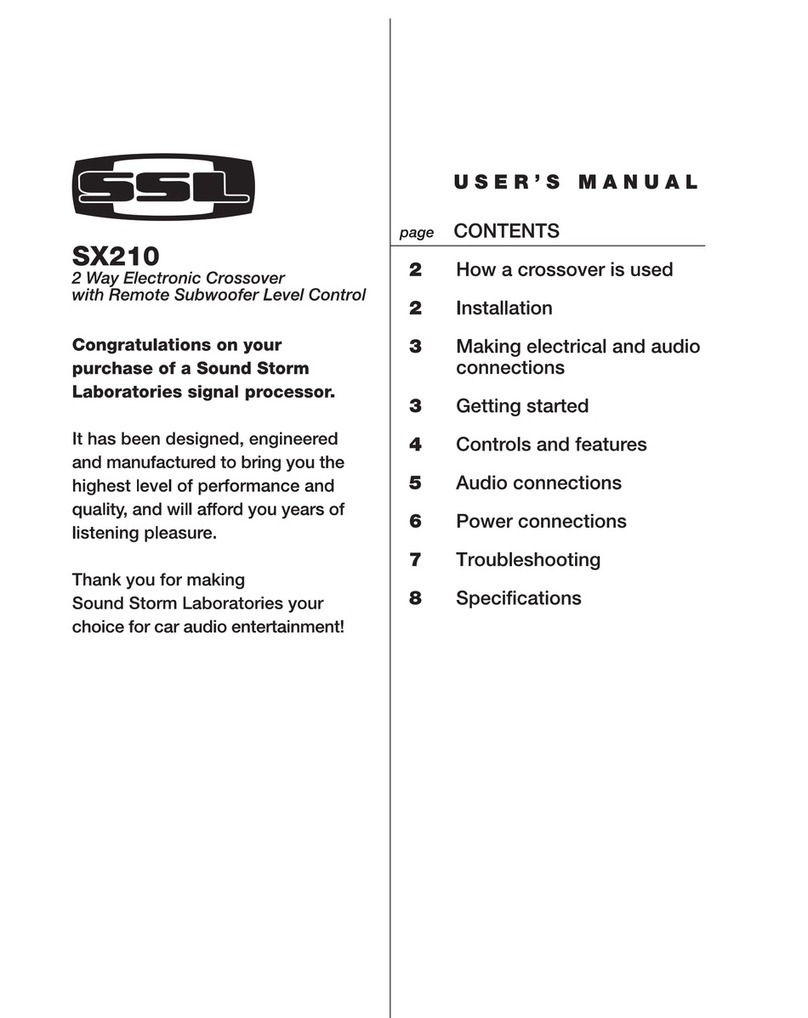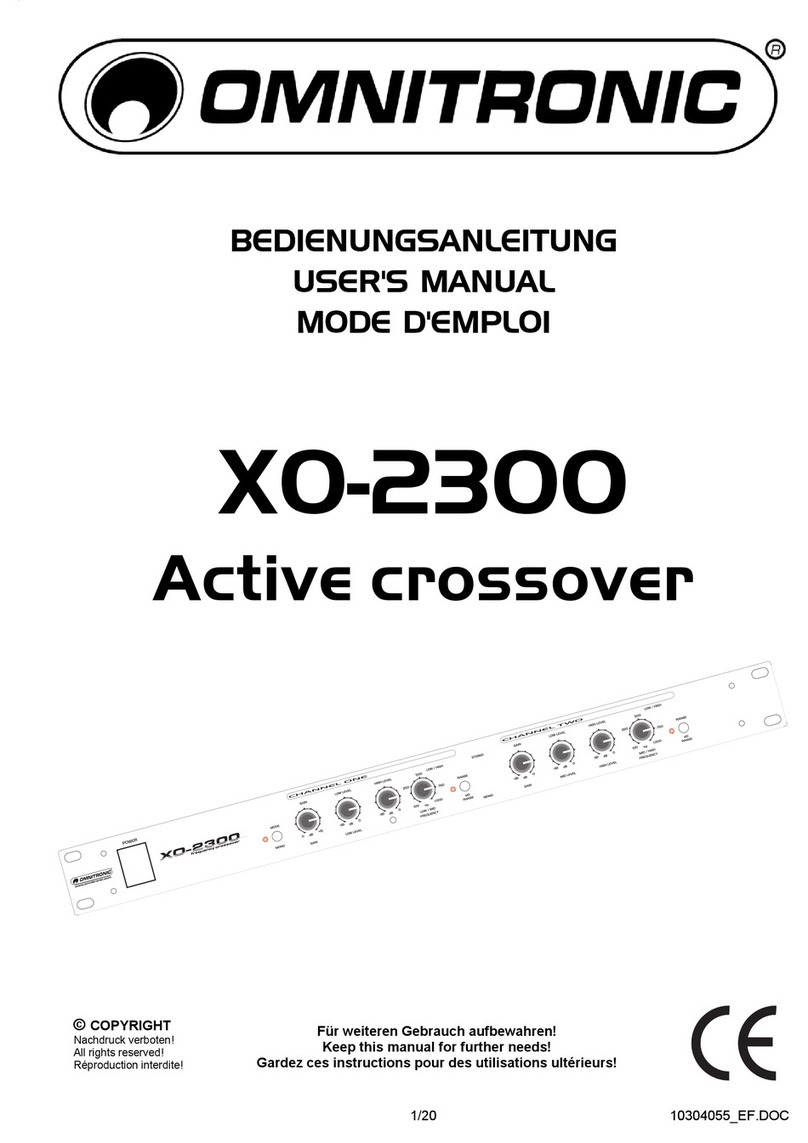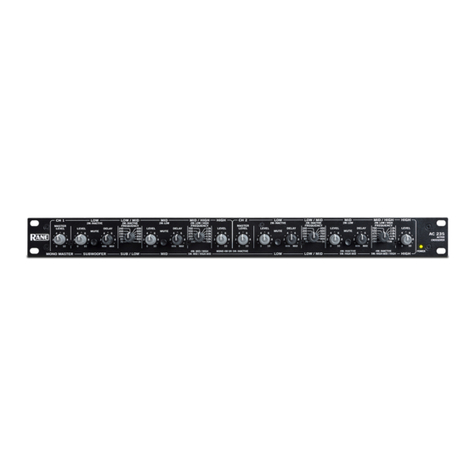
3
Operating Manual - XR1001, XR2001, and XR4001 Electronic Crossovers
1. INTRODUCTION
Your ASHLY crossover is the product of an in-
tensive research effort which combined a reexamination
of traditional crossover theory with practical field use.
Over the years, a number of refinements and new models
have been added to our crossover series, but the original
design goals have remained the same: to produce a cross-
over which is sonically accurate, is flexible enough to
suit a wide variety of systems, and affords maximum pro-
tection for speakers and drivers.
All Ashly crossovers are based upon the same
powerful state-variable filter circuit, which guarantees that
two adjacent frequency band outputs always remain in
phase. Our crossovers offer a number of useful and un-
usual features, including continuous tuning, a response
control, and a unique output stage which maintains low
noise at any level setting. These models also include a
200:1 tuning range, output mute switches, and both TRS
and XLR connectors. Like other Ashly products, your
crossover features low noise and distortion, active bal-
anced inputs, a peak level indicator, a precision regulated
power supply, protection against abnormal input or out-
put conditions, and rugged mechanical construction.
Conservative design and an unusually thorough procedure
for quality control have earned Ashly a reputation for
dependability in the recording, sound reinforcement, and
broadcast fields.
Due to the similarity of the operating controls on
our various models, we have prepared this one manual to
cover our complete crossover line. Specific notes on each
model will be found in separate application notes. Many
owners are unaware of the ease with which you can
reconfigure your crossover for nonstandard operation. For
example, a 4-way crossover can easily be used as a mono
2-way with tunable subsonic and ultrasonic cutoff filters,
and a stereo 3-way can function as a mono 5-way cross-
over. No internal modifications are necessary, and audio
performance is not compromised. In addition, this manual
covers normal setup and operation and offers troubleshoot-
ing tips. Please take time to read it before
operating your crossover.
2. UNPACKING
As a part of our system of quality
control, every Ashly product is carefully
inspected before leaving the factory to en-
sure flawless appearance. After unpacking,
please inspect for any physical damage.
Save the shipping carton and all packing
materials , as they were carefully designed
to reduce to minimum the possibility of
transportation damage should the unit again require pack-
ing and shipping. In the event that damage has occurred,
immediately notify your dealer so that a written claim to
cover the damages can be initiated.
The right to any claim against a public carrier
can be forfeited if the carrier is not notified promptly and
if the shipping carton and packing materials are not avail-
able for inspection by the carrier. Save all packing mate-
rials until the claim has been settled.
3. AC POWER REQUIREMENTS
Unless otherwise indicated on the back of the
unit, all crossovers should be connected to a 3-wire
grounded outlet supplying 120 Volts, 50-60 Hz. Some
export models are 240 volts, and are labeled accordingly.
This unit will perform normally from 92 to 130
volts AC. A “brownout” condition occurs when avail-
able AC power falls low enough to take the unit’s DC
power supply out of regulation, increasing noise and low-
ering signal headroom. In general, avoid powering your
audio system with AC circuits that additionally run large
refrigeration compressors, air conditioners, electric heat-
ers, lighting systems, etc.
This unit has an internal line fuse. In the un-
likely event that the fuse should blow, refer the product
to a qualified service technician. Power consumption is
15 watts.
4. SECURITY COVERS
For installations where it is desirable to protect
the front panel controls from tampering or accidental
misadjustment, use the Ashly security cover, which is
available in both single and double rack space sizes. In-
stallation is simple and does not require removal of the
equipment from your rack. See your Ashly dealer for de-
tails.
Ashly Security Cover Installation
